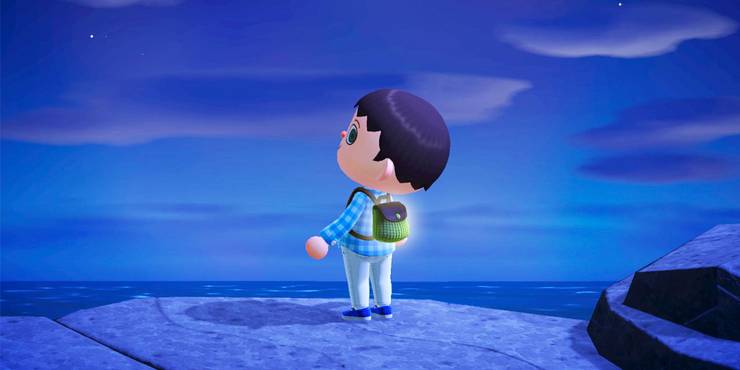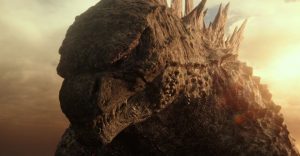Animal Crossing: New Horizons – How To Maximize Productivity At Night

Animal Crossing: New Horizons was made to be enjoyed by gamers from all walks of life — from overeager larks to reluctant night owls. Perhaps even a bit of both. If you’ve been playing almost exclusively during the day, consider yourself among the lucky majority; the best of New Horizons typically occurs at daytime. The island would be bustling with villagers and merchants, its beaches and grassy paths brimming with life and vigor. It’s the most exciting time of day to be an Animal Crossing player. But if you’re among those forever resigned to a nocturnal schedule because of certain life and work responsibilities, it may feel as though you are monumentally missing out. With shops closed by 10, villagers mostly absent, and daytime vendors nowhere to be found, what else is there to do in the evening but catch 20 pieces of the same fish, trap 20 pieces of the same bugs, and wait for the rest of the island to wake up?
You’d be surprised. New Horizons’ after-hours may seem like the least interesting time of day, but it doesn’t mean players can’t be productive. In fact, there’s plenty to do from 9 PM to 5 AM, from the time Able Sisters and Nook’s Cranny close to the game’s preset cutoff, most of them involving night-only activities. Not counting seasonality, Animal Crossing: New Horizons features several in-game perks that are only available after dusk, things like rare insects, round-the-clock visitors, and shooting stars.
Most players have a relatively nondescript evening routine. They spend the night scouring their island for items they may have missed during the day: wood, iron nuggets, stones, clay, and other raw materials. Others spend their after-hours collecting a wide assortment of bugs, shells, and fish, to be dropped off at Nook’s Cranny. They can forage for as much as they want and rack up to a hundred thousand in one night by just leaving items in Timmy and Tommy’s designated Drop-Off Box. As fruitful as this may sound, it doesn’t fully make use of New Horizons’s night-exclusive features. It’s simply a repeat of what players already do during the day. And most Animal Crossing players may not know this, but the Nooks’ Drop-Off Box only purchases items for 80% their normal, daytime value, which makes it the least profitable option for trading off high-value fish and bugs, most of which are only available at night. The Drop-Off Box is hardly an evening perk. Players are best off waiting for Nook’s Cranny to open the next day. This brings us back to the million-bell question — if the Box can only earn players so many bells, what are they supposed to do in the hours leading up to 8 AM? Take advantage of every single late-night opportunity, of course.
Catching Night-Only Bugs and Fish on Animal Crossing: New Horizons

New Horizons islands are always bristling with fauna. And while most critters are present throughout the day, some only come out once the sun sets, depending on the season. Since Animal Crossing: New Horizons follows real-world timestamps and locations, the in-game Critterpedia varies per month; sometimes only a certain kind of stag is available, sometimes arapaimas are everywhere. Experiment. The animals and their corresponding schedules differ depending on the season, time of day, and hemisphere. For the complete list of New Horizons’ critters, check here: bugs, fish.
In general, tarantulas, moths, emperor butterflies, crickets, fireflies, giant water bugs, man-faced stink bugs, stags, hermit crabs, mosquitoes, spiders, scorpions, Scarab and Goliath beetles, and certain types of Horned bugs and cicadas are only available in the evening. Take special care catching tarantulas, scorpions, emperor butterflies, stags, Horned insects, and Scarab and Goliath beetles as each cost a fortune! A single tarantula sells for 8000 bells, a scorpion likewise. An emperor butterfly is priced at 4000, a Goliath beetle at 8000, and a Scarab at 10000. Stags cost between 1000 (Miyama stag) to 12000 bells (Giraffe and Golden stags). Horned bugs like the Horned dynastid and Horned Hercules are priced between 1350 to about 12000 bells. The game’s insect catalog is as expansive as it is rare.
New Horizons’s marine life is equally diverse and remunerative. River critters like the dace, soft-shelled turtle, snapping turtle, freshwater goby, mitten crabs, angelfish, Arowana, arapaima, and saddled bichir only resurface after sundown; same goes for pond-only fish like the koi, catfish, and gar, and sea-specific fish like the barreleye, blowfish, and football fish. Some river animals like to play coy and can only be angled from atop cliffs. A few examples of night-time clifftop fish would be the cherry salmon, golden trout, and stringfish. The char only swims to shore close to dusk but can be located all around the island.
Always be mindful of New Horizons’s most expensive fish. The koi, soft-shelled turtle, snapping turtle, char, cherry salmon, mitten crab, angelfish, gar, saddled bichir, blowfish, and football fish are all in the four-digits range, with the gar being the most costly (a whopping 6000 bells!). Everything else is in the five-digits range: arapaima and Arowana (10000 bells each), golden trout, barreleye, and stringfish (15000 bells each). Sharks are another rare commodity on Animal Crossing. They only swim in seawater and aren’t catchable all year-round. Some sharks only appear during the day; the rest only swim close to the beaches at night. The saw shark (12000 bells), hammerhead (8000 bells), and great white (15000 bells) are exclusively night-only and cost much when traded.
Be smart when trading high-value insects and fish for bells. Bartering items with Timmy and Tommy may seem like standard practice, but compared to C.J. and Flick, they don’t pay as much. C.J. and Flick are partner-enthusiasts. C.J. is a camera-hungry beaver that specializes in ichthyology (the study of fish) and is willing to take marine animals off your hands in exchange for completing random fishing challenges. Flick is C.J.’s bug-obsessed counterpart; he is a wandering lizard that specializes in entomology (the study of insects) and hosts Bug-Offs every summer in exchange for bug-inspired prizes. Both merchants will purchase bugs and fish with markup, specifically for 1.5x the critters’ normal, daytime value. C.J. will only buy fish after each challenge, while Flick will accept insects for sale right away. Both appear randomly on the island, accept commissions for critter-inspired sculptures, and are always accessible before 5 AM. Always prioritize markup over the SRP (suggested retail price) for maximum profit. Conversely, if you’re not interested in selling bugs and fish, you can always donate them to Blathers for display in his museum or keep some for your private collection.
Farming Stars on Animal Crossing: New Horizons

Shooting stars and meteor showers are recurring evening-only spectacles on Animal Crossing: New Horizons. They take the form of meteoroids that whiz across the sky randomly some nights, and will yield players stars, zodiac fragments, and star fragments for use in DIY, e.g. wands, Taurus bathtubs, Pisces lamps, asteroids, astronaut suits, and even flying saucers and lunar rovers. To acquire these much-coveted celestial pieces, keep an eye out for shooting stars during clear evenings. Press the up button and shift your perspective to the night sky and make sure you aren’t holding or doing anything. Stay outdoors and listen closely. To wish on a star and win fragments, press A as soon as a hypervelocity rock bullets through. Shooting stars usually come in pairs, so if you miss the first one, you can always wish on the second.
Wishing on shooting stars is the only way to win cosmic fragments on Animal Crossing: New Horizons. The fragments start off small at first but get bigger over time as meteor showers are introduced. The more you wish on stars, the more fragments you’re likely to get in a single event. Unlike regular shooting stars, which can appear without warning, players will always know if a meteor shower is coming up. Celeste, Blathers’s cosmos-obsessed sister, will always hang around the island after 7 and always on the night of a meteor shower. Once facilities are sufficiently upgraded, Isabelle will also inform players of an impending shower during opening announcements. Some villagers may even warn players in advance. Meteor showers may also yield zodiac fragments, special items that adhere to the astrological cycle and can be used to craft zodiac-specific items. For example, this month, from May 21 to June 20, wishing on meteor showers will produce Gemini fragments. After June 20 and until July 22, players can expect Cancer fragments, and so on. Zodiac DIYs can only be obtained from Celeste. Like Blathers, Celeste is knowledgeable about all things constellations and will share trivia when asked.
Wisp and Select Traveling Visitors on Animal Crossing: New Horizons

Some New Horizons visitors are daytime-only. Kicks the shoe-selling skunk and Leif the shrubs-loving sloth leave at exactly 10 PM. Label, the third and more ambitious and fashion-conscious Able Sister, always leaves around midnight. The same goes for Daisy Mae, who peddles turnips. The others are either accessible all day round, or only after nightfall. Saharah‘s wares are available for sale till 5 AM. Redd, a wandering fox offering rare paintings and other black market items, appears randomly on players’ islands and may stay all throughout the night. Celeste only visits at night. As mentioned, Flick and C.J. are both available for trade, requests, and challenges until the game’s official cutoff for the previous day (5 AM).
Other visitors will offer rare items in exchange for favors. Wisp the ghost offers players a choice between “something new” and “something expensive” as compensation for locating and returning all five of his spirit fragments. His visits are random but he’s only ever around at night, from 10 PM to 5 AM. Gulliver is a seafaring seagull that can wash up on your beach all day round. He will ship players a gift via mail-in exchange for finding all five of his broken communicator parts.
Insomniac Villagers on Animal Crossing: New Horizons

Most villagers wake and sleep at a preset time every day. The exact times differ from personality type to personality type — normal villagers, for instance, wake at 5 AM and sleep at 9 PM, while sisterly ones wake at 9:30 AM and sleep at 3 AM — but in general, most of your animal neighbors will be asleep after sundown. Their homes will be bolted shut and they will have a personalized sign pinned to their front door informing players to come back in the morning when they’re awake.
Some villagers, however, tend to break character and be strangely active at night. Instead of staying indoors, they’re usually engaged in some random activity — anything from watering plants to hanging idly around rivers. Sometimes they’d be dancing next to a boombox you set up or exercising in the dead of the night in front of Resident Services when they could easily do the same thing when the sun is up. Some villagers would scamper around the island during graveyard hours, restless but oddly liberated. Nobody really knows why. Maybe they too just want some alone time or are more comfortable carrying out their daytime routines at night?
Regardless, one of the joys of playing New Horizons is watching the complex programming of Animal Crossing bring NPCs to life, and react in ways no player can expect. Interactions during this time are some of the best in the series. Villagers often have the most intriguing thoughts and behavior after hours. Take advantage of this time to bond with your equally nocturnal neighbors.
Animal Crossing: New Horizons is currently available on the Nintendo Switch.
About The Author

















